Tea, Cake ... and Lacquerware Under the Cherry Trees
The Kogawas take us on a tasty journey with traditional recipes from the mountainous region of Hida. This time, a tea party under the cherry blossoms with bracken-starch cake on handmade lacquerware.
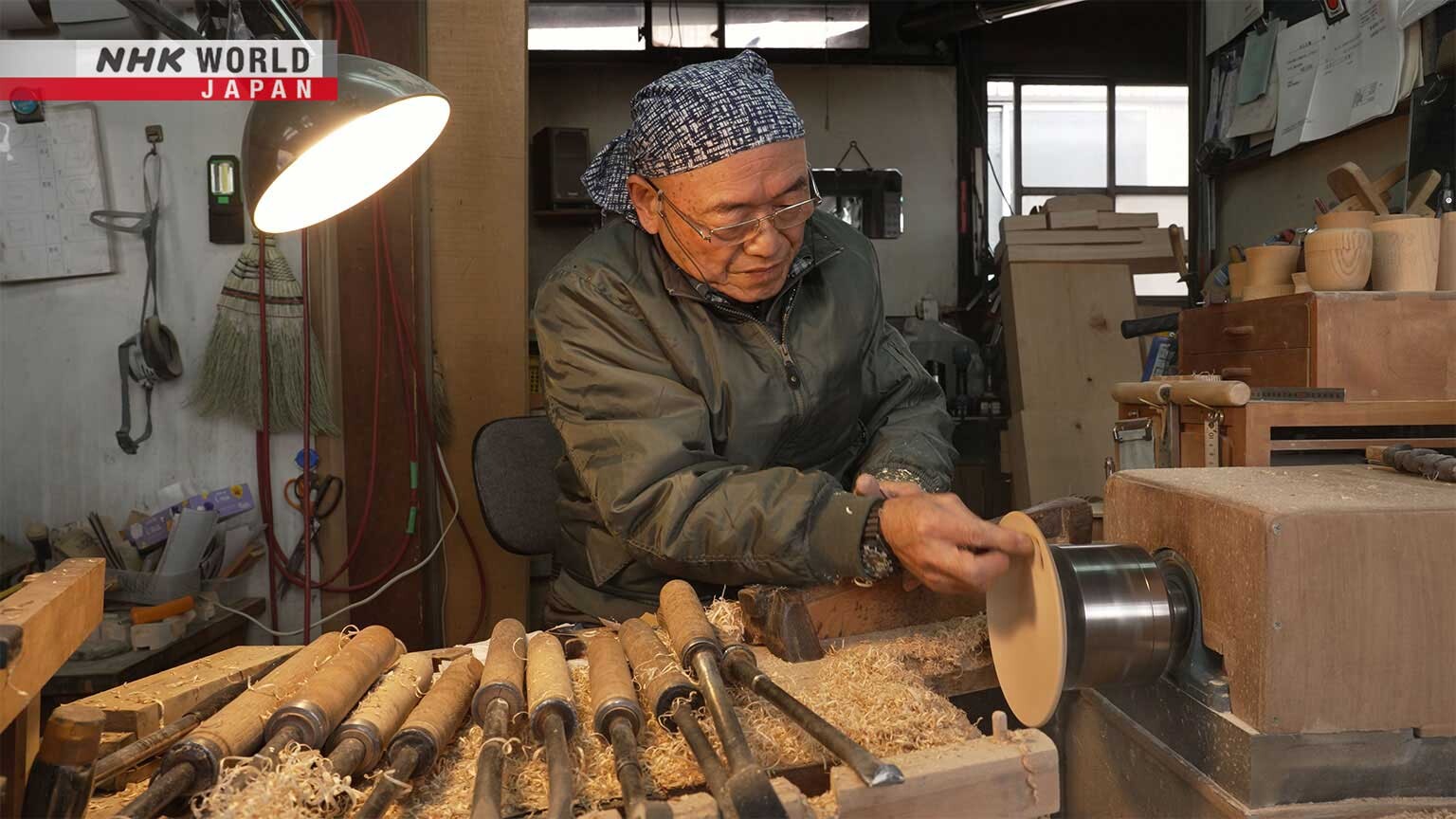
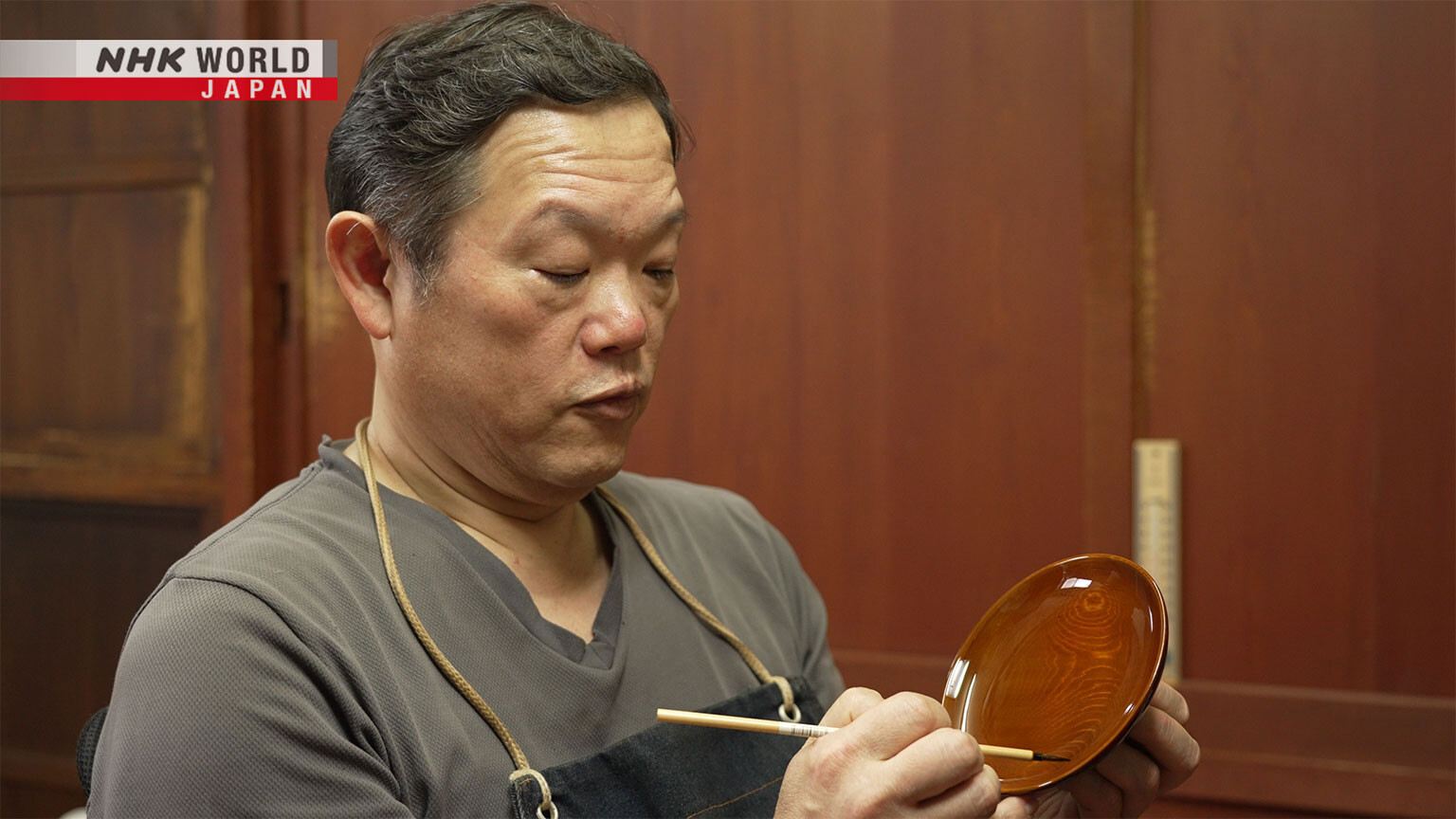
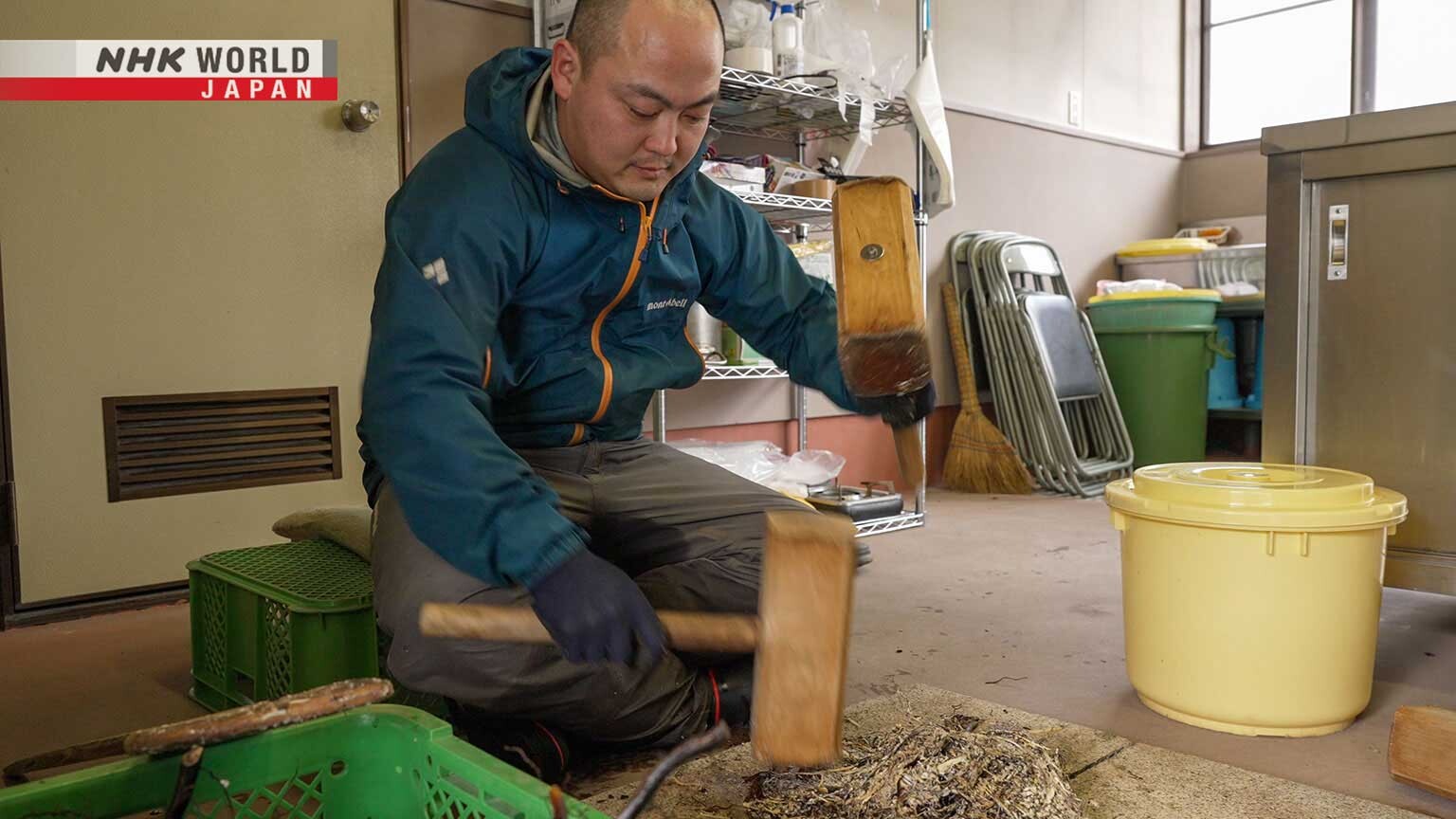
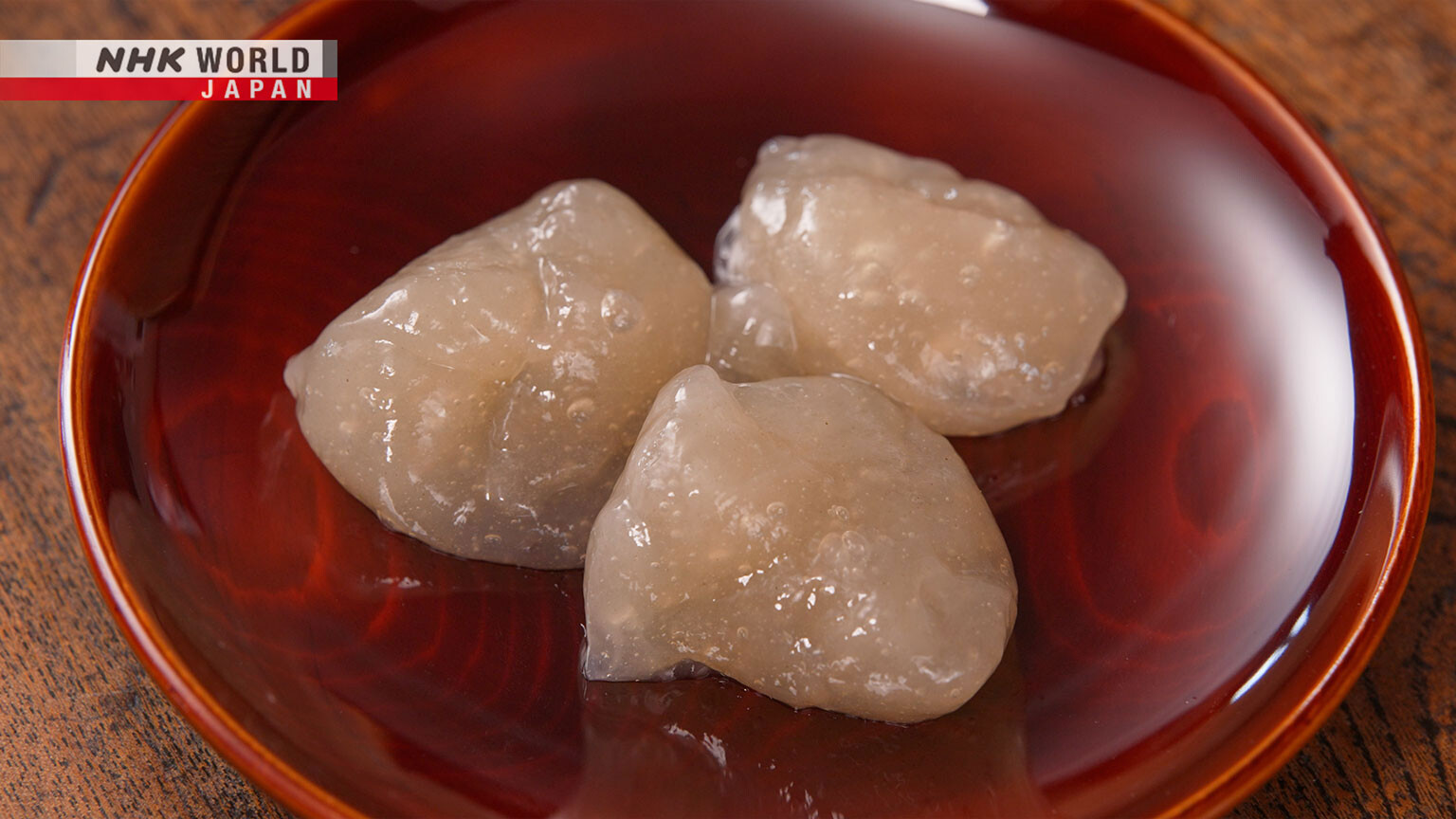
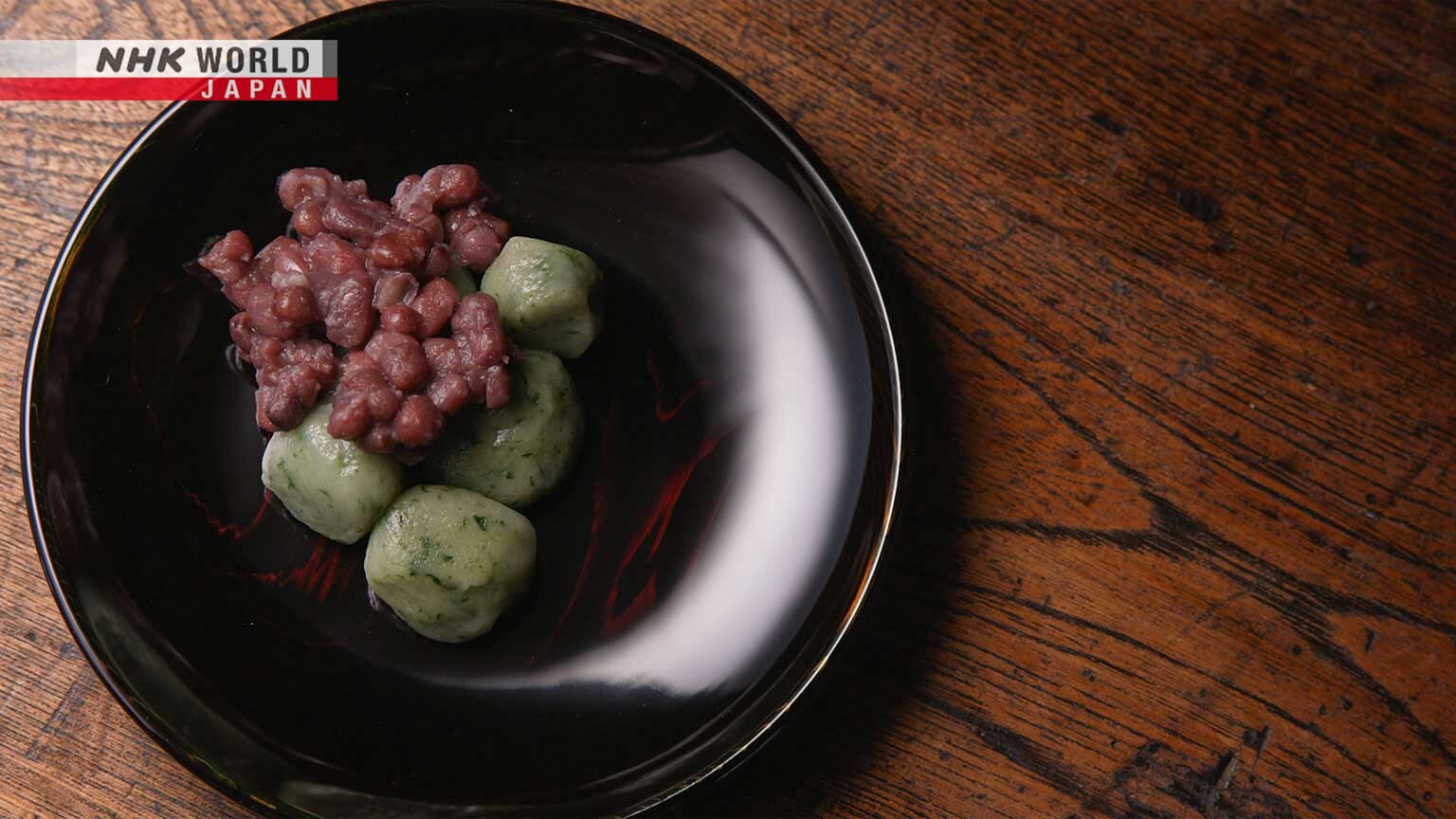
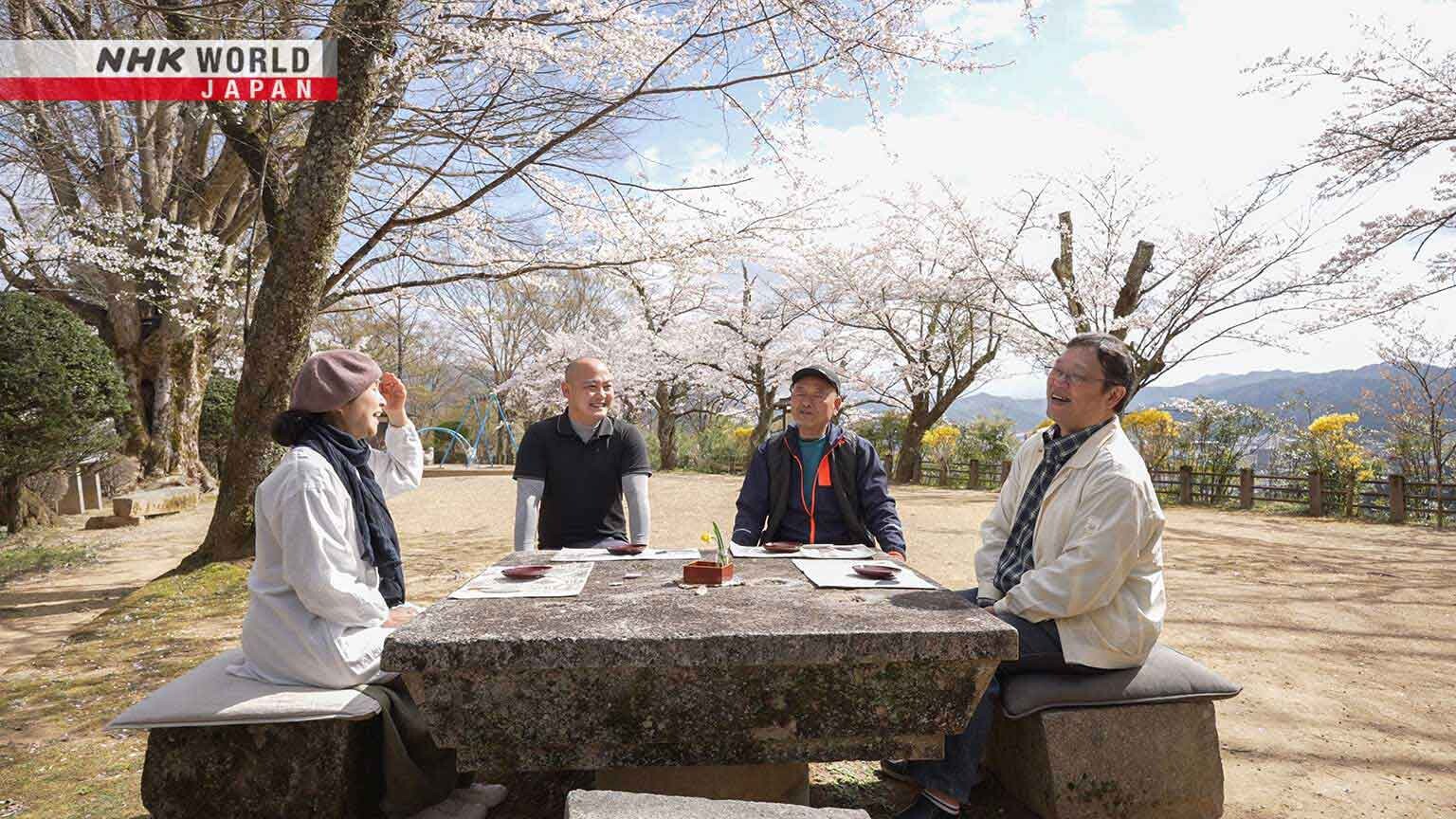
Transcript
Spring's arrival was long awaited by the people of Hida.
Long time no see, everyone! It's me, Tama.
What a nice day!
With my head in the shade and my behind in the sunlight, it's just perfect.
My humans are off to a festival.
Hey, don't forget to bring me a little snack!
Oh, look!
The spring festival enlivens the town of Takayama.
One of the event's highlights are these sumptuously ornate floats.
This part is lacquered, too.
What Nobuko is admiring...
... is the lacquered base of each of them.
Lacquerware is a time-honored craft in the region.
We can see the wood grain.
The abundance of wood in Hida Takayama has given birth to unique traditional handcrafts.
One of which is Hida Shunkei, a skillful combination of wood carving and lacquer.
What dish would be worthy of being served on such a plate?
In Japan, "satoyama" are small rural regions like this one, where people live in harmony with nature.
In this guesthouse, set up in a refurbished one-hundred-year-old farmer's residence...
...the Kogawas enrich their leisurely life with home-cooked delights from the culinary traditions of the Hida region.
Born here, Chef Kogawa Nobuko is an enthusiast of the local cuisine.
Filming her is her husband, Makoto, a seasoned cameraman.
And watching over the two is Tama-san.
This time, let's join them for some tea, cake...
and lacquerware under the blooming cherry trees.
March in Hida is still cold and snowy.
But keen observers can spot small hints of spring's arrival.
Oh, little flower, are you here to tell me cherry blossom season is coming soon?
In Takayama is a sweet perfect for enjoying the cherry blossoms.
Somewhere along the old-fashioned streets, this shop is always bustling with customers.
They come for this: "warabi mochi."
"Mochi" is rice cake, but this one is made from the root of bracken.
It combines simple sweetness and a pleasant gelatinous texture.
"Warabi mochi" will make a fine "cake" for the tea party under the cherry blossoms Nobuko is planning.
She and Makoto head to a shop specializing in Hida Shunkei lacquerware in Takayama City.
She believes it'll better showcase the subtle beauty of "warabi mochi."
- Hi!
- Hi. Welcome.
What a lovely shop.
Hida Shunkei is said to have originated four centuries ago, when it was offered as a gift to the local lord.
It eventually spread to the common folk, who used it mainly for celebrations and other special occasions.
With time, the lacquer gains in transparency.
It accentuates the natural beauty of the wood grain.
Hida Shunkei is characterized by how it lets the wood grain show through.
It has a plain and simple beauty.
With a rustic beauty that grows in charm with use, it's both elegant and practical.
- Like giving wood a light makeup.
- Yes.
Nobuko decides to order a new set of lacquerware plates for the "warabi mochi" she'll prepare.
So much snow!
It may be March, but the winter chill still clings.
Good afternoon!
The two visit the workshop of Kawakami Ken-ichi, a leading woodturner who crafts Hida Shunkei pieces.
I'd like you to make plates for me.
Like this.
- For "warabi mochi."
- I see.
Nobuko asked her friend, Jiro, to make a drawing of the look she envisioned for the plates.
It's lovely.
You know "mei-mei zara?"
I think serving plates of a type called "mei-mei zara" would look elegant.
Kawakami-san chose for the wood some two-hundred-year-old "hinoki" cypress.
He made sure to select pieces with beautiful grain patterns.
Because Hida Shunkei lacquer isn't opaque, and lets the texture of the wood show through,
the quality of the woodturner's handiwork will greatly affect the final look.
With no margin for error, it requires a high level of skill.
The plates are ready to be coated.
The wood grain is amazing.
Coated in lacquer, it'll look even better.
I can imagine the "warabi mochi" on it.
Something has been worrying Kawakami-san.
Overall sales of Hida Shunkei lacquerware are down to one fifth of what they were 30 years ago.
Many artisans are abandoning the trade.
To support a family, maintain a workshop and procure materials...
is impossible with the current income of artisans.
There isn't enough work.
Even a leading Hida Shunkei woodturner, like Kawakami-san, is struggling to find a way to preserve this four-hundred-year-old tradition.
He made a total of ten plates.
They're wonderful.
I'll have them coated in "light makeup."
Thank you.
Oh, I wish I could do something to help save Hida Shunkei laquerware...
but I'm just a cat.
What's with the outfit?
We're off to gather starch...
from bracken roots.
I'll make sweets with it.
To make "warabi mochi," they're going to gather bracken roots in the mountains.
Waiting for them...
... are their friends Kei and Jiro, who came to offer a hand.
- Nice weather.
- Yes.
Our goal is 30 kg.
30 kg, that's quite a lot.
Isn't that bracken?
Kei found a spot where the ground is covered in withered bracken leaves.
Long ago, in mountain villages where the ground wasn't suited to cultivating rice,
people dug up bracken roots to produce starch.
It was highly valued as a source of income, when rice wasn't an option.
But making it is painstaking work.
Bracken starch has become a rare and precious ingredient.
"Warabi mochi" prepared with authentic bracken starch is hard to find.
It's almost too precious to eat!
The sticky white core of the root is used to make the starch.
Thanks to the help of Kei and Jiro, Nobuko and Makoto were able to gather 30 kilograms of roots in about four hours.
With their yield, they head further into the mountains.
They arrive at Yamanomura, a village in a remote area about 1,000 meters in altitude.
It once produced bracken starch in large amounts.
Hi!
Thanks for having us.
We gathered a lot of roots.
Maehara Toru is now the only one here who makes bracken starch following the traditional method.
He shows Nobuko how it's done.
First, each root is thoroughly cleaned.
Scrub off all the dirt. The starch will be finer.
The icy cold water is tough on the hands.
Now that the roots are cleaned, time for a beating!
As the roots get crushed, starch comes out.
After the roots are left to rest overnight, they're given a water bath.
Mixing and squeezing like this causes the starch to dissolve in water.
He then pours the content in a vat, and the starch filters through and falls underneath.
The white layer at the bottom is bracken starch.
The water is poured out, and the starch is left to dry and harden.
The dark top layer that contains impurities is scraped off, and the remaining white part is dried over a week.
Only then is the bracken starch finally ready.
30 kilograms of roots results in a mere 276 grams of starch - the precious product of hard and long labor.
Toru fell in love with the taste of "warabi mochi," and so, eight years ago, he moved to this village alone.
From digging up the roots to the beating, filtering, and drying, he does every step in the process by hand.
You do all that alone?
I know it's a huge amount of work.
But I see all that painstaking work as a part of the region's rich culture.
I came here drawn to this culture, and I'll keep doing this as long as I can.
Wonderful!
Toru was so enamored with "warabi mochi," he went all the way to live in that remote village.
Some might say he's a bit odd, but I think he's kind of cool.
Excuse me.
- Hi!
- Come on in.
Today, they visit the workshop of Hida Shunkei lacquer artisan Kawahara Toshihiko.
He'll be coating the plates Kawakami-san made.
For this he's going to try a new method.
Nowadays, I try skipping the undercoat part...
and go straight to coating with lacquer.
Normally, an undercoat is applied first, but he'll be coating the wood directly with lacquer.
It results in a beautiful finish. I like that method.
With fewer people crafting Hida Shunkei, he's been looking for ways to simplify the production, without sacrificing quality.
And so, he developed a method that does away with the step of undercoating, yet results in an even more beautiful finish.
In whatever way, as long as someone takes over, all won't be lost.
If there's no one to take over the craft, it'll disappear.
Normally, three coats of lacquer are applied, but Kawahara-san's method needs as many as five.
Nevertheless, this new process is simpler.
An even coating, that beautifully highlights the pattern of the wood grain, is the mark of true Hida Shunkei craftsmanship.
I follow the wood grain.
The brush marks will remain.
So, I follow along the grain pattern as I coat.
So the strokes don't stand out.
Brushing the excess lacquer into the grooves of the wood grain makes for a more even finish.
The lacquered plates will be ready after they're left to dry for a week.
Just as the cherry trees in Takayama are in full bloom, the plates coated by Kawahara-san are done.
They're beautiful!
This is red, and this is amber.
The lacquer will get clearer and gain in color.
The lot consists of serving plates in three different colors.
Amber is the most traditional.
Called "beni shunkei," this one is a bright red color.
And this black reddish hue will gain a hint of green over time.
Thanks to Kawahara-san's innovative coating method, the serving plates are delightful masterpieces.
Ah! The starch and plates are ready.
It's about time for the cherry blossom party.
Oh! Someone's here!
Toru arrives, bracken starch in hand.
Thank you!
The fruit of so much labor.
He teaches Nobuko how to prepare "warabi mochi."
It's quite simple: dissolve equal amounts of starch and sugar in water.
Then all you need to do is mix it over a medium flame.
After a while, some lumps start to form at the bottom.
Lower the fire, and firmly mix.
The starch thickens, a bit like "mochi" rice cake.
Pour it in water and shape it.
And the "warabi mochi" is ready.
Nothing compares to its simple, yet pleasant sweetness, and satisfying chewy texture.
It's got a nice elasticity...
and it goes down well.
Knowing all the work it involved makes it even tastier.
Arranged on the finely lacquered plates...
... the "warabi mochi" takes on an almost regal allure.
The couple arrive at a park with cherry trees.
Nobuko brought tea and sweets.
Joining them are Toru, Kawakami-san and Kawahara-san.
Thank you so much for coming.
They open the party with "warabi mochi."
Under the light of the sun, it shines brightly against its beautiful lacquerware backdrop.
But how is the taste?
A nice texture.
It's such a fine taste that can only come from genuine bracken starch.
The colors of the mochi and the lacquerware look lovely together.
It's beautiful.
I can't believe I made this.
And the shape is nice, too.
It's because I made it.
I also prepared these.
Nobuko also made some other kinds of sweets.
The box too is Hida Shunkei lacquerware, of course.
She had picked some fresh mugwort...
... lightly boiled it...
... then finely ground it, and mixed it with rice flour.
She then rolled it into balls to make "yomogi dango," characterized by their light green color and fresh aroma.
To match the color of the "mochi," she serves them on green lacquered plates.
She also made "tempura manju," a festival favorite in Hida.
White and red balls of flour dough, stuffed with sweet bean paste, steamed, then fried with a tempura batter.
To showcase the contrast between the red and white dumplings, she serves them on plates lacquered in red.
The sweets are paired with herbal tea, made from a plant called "kuromoji."
It's exquisite.
Enjoying sweets served on Hida Shunkei lacquerware has renewed their appreciation for authenticity.
My main priority now...
is to make sure the craft doesn't disappear.
I can keep going for a bit longer.
I'll do my best to promote Hida Shunkei...
and try to find new opportunities for it.
Everyone should know of its appeal.
Everyone fully enjoyed a quintessentially Japanese springtime event: a little tea party under the cherry blossoms.
A feast to the eyes and tastebuds...
and with your warm smile, it was a wonderful time.
I remember, I remember,
I remember,
"Still singing the satoyama blues"
Do you remember?
"Traditional crafts once so glorious
Their survival is entrusted to us"
"Generations come and pass
But people's pride and love forever last"
"Times are hard, don't throw in the towel
Inefficiency can also be valuable"
"This culture our ancestors have begotten
We work hard so it won't be forgotten"
"Fading are my memories
Faint are the melodies"
"Trapped in the algorithm of advertising
We dance to the beat of senseless consuming"
"But in the satoyama, it's sustainable living"
I remember, I remember,
I remember,
"Still singing the satoyama blues"
I remember, I remember,
I remember,
Still singing the satoyama blues."